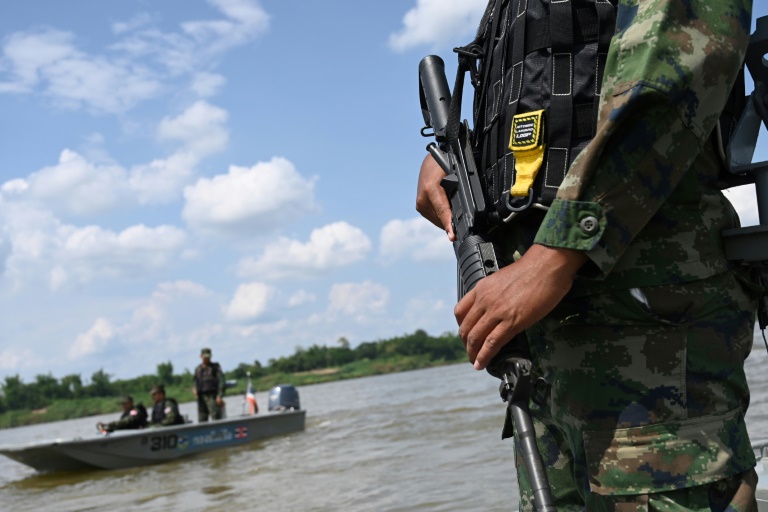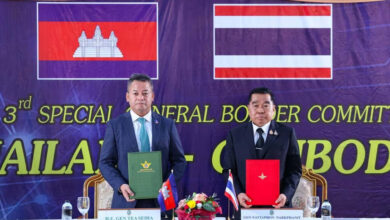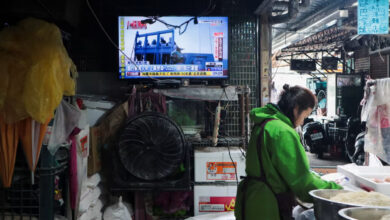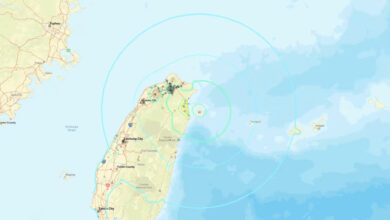
As dusk falls along the Mekong River, a nightly dance begins between Thai border security and Laos drug gangs now using drones, scouts and a pool of poor fishermen to shift record amounts of meth into Thailand.
Landlocked, secretive and with ungovernable borders, Laos has become a sluice for transporting Made-In-Myanmar meth to the drug hungry markets of Southeast Asia and Australia, where billion-dollar seizures are now being made.
Whisked over the remote mountains of Laos — one of the world’s last surviving communist countries — shipments are regularly slipping into Thailand, the region’s drug superhighway.
“It’s coming in from over there,” Thai navy captain Sumnuan Kamdee told AFP, gesturing across the wide Mekong, which bisects Thailand and Laos.
“Drugs have become a national threat.”
Armed with M4 rifles and night vision goggles, his Mekong River Unit scours the water in speedboats in Nakhon Phanom, one of Thailand’s poorest border provinces in the northeast.
But the border is long and cannot be fully policed.
Once inside the kingdom, tonnes of highly addictive crystal meth, known as “ice”, and hundreds of millions of yaba pills — caffeine-laced methamphetamine tablets guzzled by everyone from laborers to ravers — are consumed or warehoused before being smuggled onwards.
A months-long Thai military-led crackdown in the northern jungles of the kingdom’s section of the notorious “Golden Triangle” has blocked the quickest drug route south.
But with big money to be made, the narco gangs have carved new routes west and east — through Laos and across the Mekong.
In the fading light, as the limestone karst scenery of Laos elbows into the night sky, black-clad Thai military rangers wait in mosquito-infested bushes for suspicious crossings.
But the drug gangs are also quick to adapt.
“They have drones (from Laos) searching the river to see if there are any officials,” Phoomsak Kampoo, district chief officer of Tha Utain district of Nakhon Phanom, told AFP.
“And they have scouts watching for checkpoints on this (Thai) side.”
Cheap as a beer
On smaller runs, Laos fishermen will cut their engines and drift close to the Thai bank before lobbing wax-covered parcels of 2-3,000 yaba pills towards the shore, where Thai couriers scamper out to claim them.
But bigger, multi-million-dollar shipments are becoming more frequent.
Experts say the Golden Triangle region is now likely to be the biggest meth production hub in the world. Yet without the ultraviolence of the Latin American cartels, it captures fewer headlines.
On May 31 the Mekong River Unit received a tip off that led to a 133-kilo haul of crystal meth a few kilometres down river in Mukdahan province.
It was a fraction of the near three tonnes of “ice” seized by Thailand between just May 31 and June 4 — on top of nearly five million yaba tablets.
Despite the intense anti-drug operations, meth is still getting through to more lucrative overseas markets.
Australian border authorities announced a record 1.6 tonnes haul of ice in Melbourne last Friday — with an estimated street value of US $840 million — wrapped in packets of Chinese-branded tea and hidden in a shipment of stereo speakers shipped from Thailand.
At that price, losses are easily absorbed by the drug networks.
“If just one out of ten shipments gets through, they still get their money,” a senior Thai drug official told AFP, requesting anonymity.
Inside Thailand, street prices are plunging — evidence of a huge oversupply from the meth lords who have slashed costs by using cheaper precursor chemicals.
The tiny pink or green vanilla-scented yaba pills now go for as little as 30 baht (less than a dollar) in some border zones, drug officials told AFP — as little as a bottle of Thai beer.
A kilo of ice is down to around $11,000 in Bangkok — and just $4,800 in Laos.
“Meth is destroying lives, families and communities,” police major-general Pornchai Charoenwong, deputy commissioner of the Narcotics Suppression Bureau, told AFP.
Spotlight on Laos
Under pressure, Laos is co-operating with neighboring law enforcement.
“But frankly Laos really needs to up their game when it comes to tackling organised crime, drug trafficking and border control,” said Jeremy Douglas of the United Nations Office on Drugs and Crime (UNODC).
The high profile 2017 arrest of Laos drug lord Xaysana Keophimpa at Bangkok’s main airport was hailed as a new era of intelligence sharing.
But with scant details from Laos it is not clear which of Xaysana’s alleged associates has been prosecuted.
Meanwhile, meth continues to cascade across the Mekong region.
Vietnam has made record seizures this year, including 700 kilos of ice hidden in tea packets in Nghe An province, which borders Laos.
Cambodia is also reporting a spike in drug movements over its Laos border.
“Myanmar to Laos, then through Cambodia… this is now one of the main drug routes from the Golden Triangle,” Cambodia’s Deputy National Police Chief Mok Chito told AFP.
The falling drug prices are curdling a public health and crime crisis in local communities riddled with addiction and petty drug dealing.
In a remote Thai village near the Laos border, a recovering addict explained how his life slowly unravelled after being introduced to yaba aged 15.
“I lost money, friends and my health,” Nat — not his real name — told AFP.
“It took away ten years of my life. I am trying to get it back.”
Image: AFP / Aidan JONES An armed Thai navy personnel patrols along the Mekong river in Nakhon Phanom province, where drug gangs ship meth from Laos to Thailand




